Timeline of US presidential visits to India
Before Donald Trump, six US presidents have visited India, with Barack Obama the only one to make two official trips.
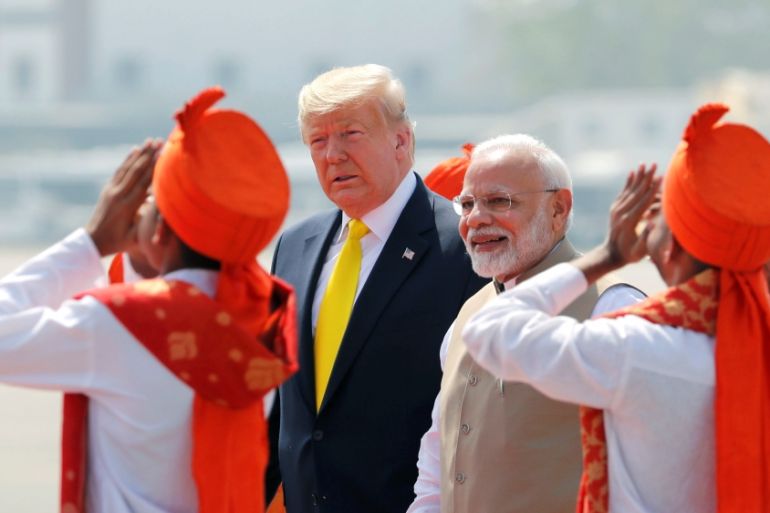
New Delhi, India – Donald Trump has embarked on his maiden visit to India becoming the seventh US president to visit the South Asian country.
He is accompanied by a high-level delegation, as well as his wife First Lady Melania Trump, daughter Ivanka Trump, and son-in-law Jared Kushner.
Keep reading
list of 3 itemsAs Trump heads to India, a trade deal appears elusive
At US rally, Modi backs Trump, takes aim at Pakistan
Trump arrived on Monday in Ahmedabad, the largest city in the western state of Gujarat, where he addressed a crowd of more than 100,000 Indians at a cricket stadium.
The event was called “Namaste Trump” (Hello Trump), in reciprocation to the “Howdy Modi” extravaganza Trump hosted last year for the Indian PM in the US city of Houston.
Ties between the two countries have improved greatly after the end of the Cold War, during which Washington leaned towards India’s rival, Pakistan, but has embraced India as a strategic partner against China in recent decades.
Barack Obama, Trump’s predecessor, is the only US president to have made two official visits to India.
We take a look at previous visits by the US presidents:
Dwight D Eisenhower – 1959
Dwight D Eisenhower in 1959 was the first US president to visit India. His visit was during the tenure of the country’s first Prime Minister Jawaharlal Nehru.
Eisenhower received a warm welcome and was greeted with a 21-gun salute when he landed in the capital, New Delhi. Huge crowds lined the streets to catch a glimpse of the 34th US president in his open-top car.
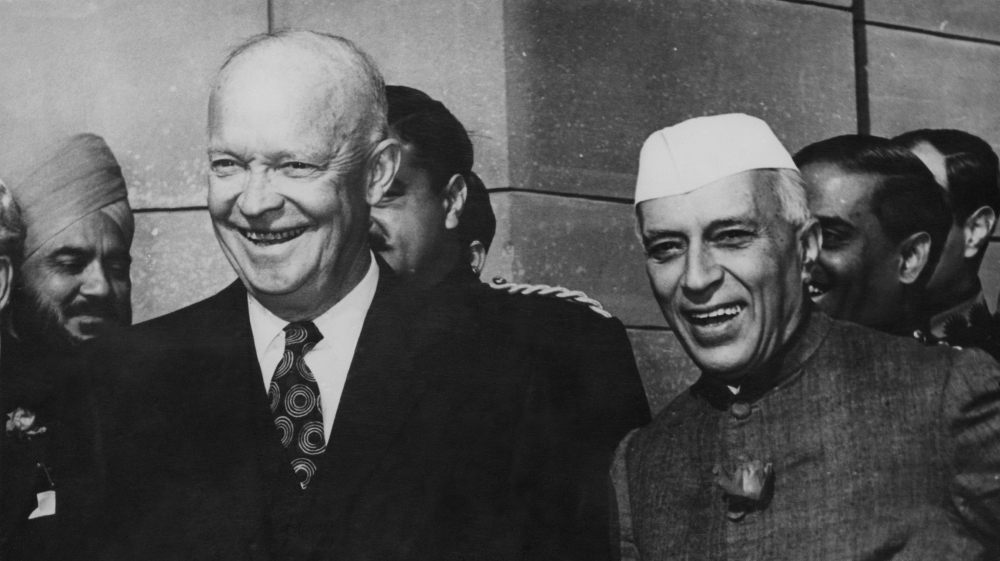
Besides delivering a public speech at New Delhi’s Ramlila ground, Eisenhower addressed members of both Houses of Parliament. The four-day trip included a stopover in his “dream place”, the Taj Mahal, which was built by Mughal ruler Shah Jahan in the 16th century.
The trip was billed a success and considered a landmark event in US-India relations as it came early in the Cold War, during which the US and Pakistan had become close allies.
Richard M Nixon – 1969
Richard M Nixon visited India on July 31, 1969. Unlike Eisenhower, Nixon spent less than a day in India as the trip was largely meant to reduce tensions between him and then-Prime Minister Indira Gandhi.
Two years later, during the India and Pakistan war of 1971, which lead to the creation of Bangladesh, the US sided with its Cold War ally, Pakistan.
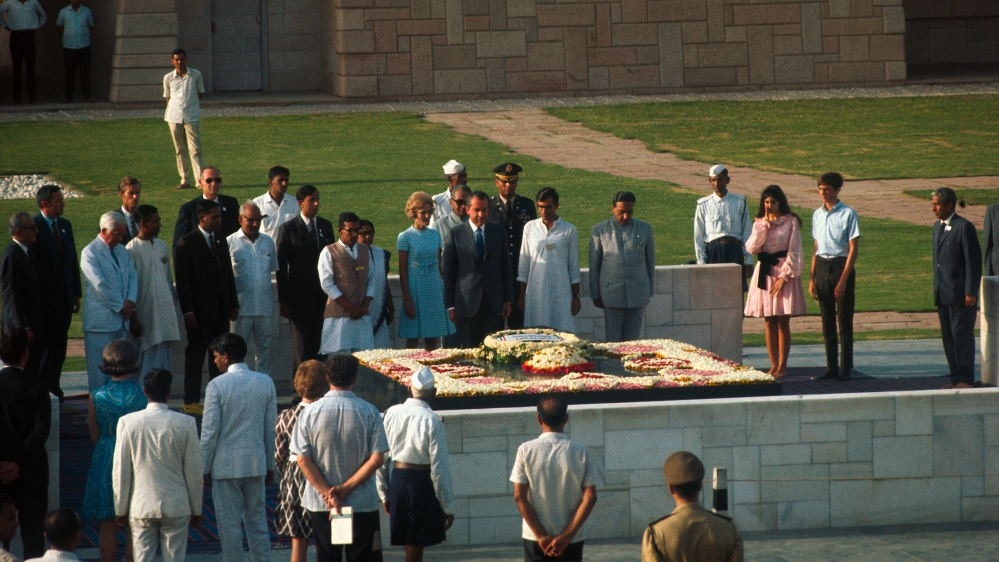
According to tapes declassified by the US State Department, Nixon had reportedly told the White House that Indians were “slippery, treacherous people”.
Jimmy Carter – 1978
Jimmy Carter came to India in January 1978, when the Janata Party’s Morarji Desai was the prime minister.
During his three-day visit, Carter addressed India’s parliament and held several meetings with Indian politicians. Carter visited a village near New Delhi, bringing a television set as a gift.
His visit was meant to break the ice between New Delhi and Washington, especially against the backdrop of the 1971 Bangladesh War of Independence and India’s nuclear test of 1974.
However, he was not able to convince Prime Minister Desai to give up India’s nuclear ambitions, a development that irritated the US.
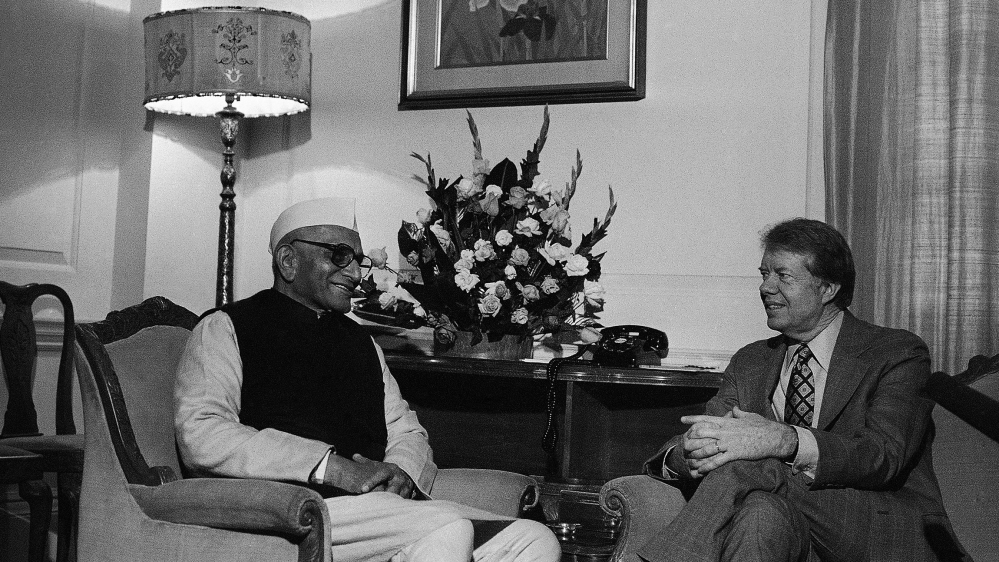
Bill Clinton – 2000
Bill Clinton, the 42nd US president, visited India in March 2000, more than two decades after the last visit by a US president.
His trip during the prime ministership of Atal Bihari Vajpayee came after a prolonged lull in the relations between the two countries. It also came after India opened its economy for foreign investors in the 1990s.
Clinton’s visit signified the beginning of closer US-India strategic and economic ties. During the 1999 war between Pakistan and India, the US under Clinton sided with India, the first time it had supported India against Pakistan.
New Delhi-based foreign policy expert Pramit Pal Chaudhuri said it was President Clinton who restarted India-US relations.
“Before Clinton, no US president had visited India for 20 years. Clinton in many ways re-engaged with India after two decades, signalling that America was taking India seriously one more time for number of reasons; nuclear test, economic growth and so on,” he said.
“Bush took it to the highest possible levels with a nuclear deal and Obama consolidated on the strategic side,” said Chaudhuri, who is also the foreign editor at Hindustan Times newspaper.
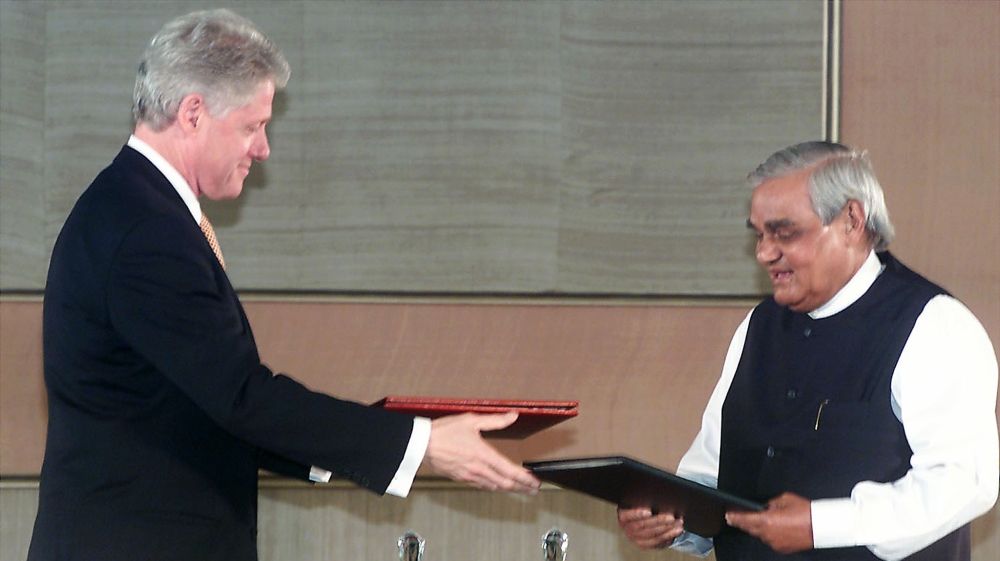
George W Bush – 2006
George W Bush visited New Delhi in 2006 when the US was being condemned worldwide for its 2003 invasion of Iraq. His trip was met with countrywide protests, with left-wing parliamentarians boycotting his address.
However, the three-day trip boosted the strategic relationship between the two countries, especially in matters of trade and nuclear technology. Bush and then-Prime Minister Manmohan Singh finalised the framework of the nuclear deal that ended New Delhi’s isolation from the nuclear equipment suppliers market.
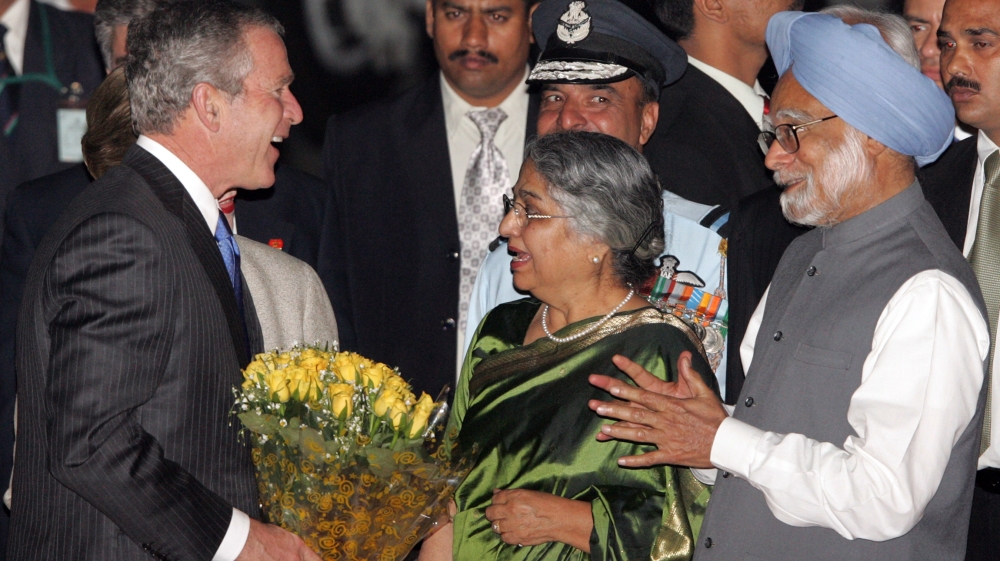
Michael Kugelman, South Asia senior associate at The Wilson Center, said the US-India relationship improved exponentially since the early 1990s, and especially since the early 2000s.
“The civil nuclear accord [under President Bush] was a milestone and, from that point, the relationship has really taken off -though it has also been saddled by outsize and unmet expectations.”
Barack Obama – 2010 and 2015
Barack Obama is the only US president to make two official visits to India. On his first visit, Obama landed in Mumbai instead of New Delhi as a show of solidarity following the Mumbai terror attacks of 2008, which killed 166 people.
During the trip, he backed India’s bid for a permanent seat in the UN Security Council. Obama and Singh, prime minister at the time, also signed trade deals worth $10bn and agreed to boost defence and national security ties.
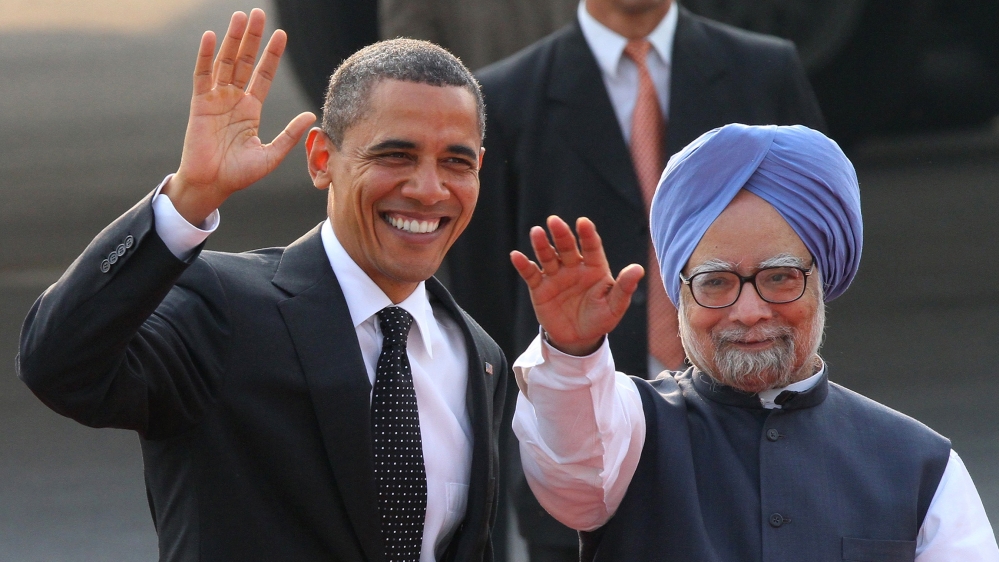
Obama visited India again in 2015 as the chief guest on Republic Day under the administration of Prime Minister Modi.
During the trip, the Democratic president made comments on religious freedom in the country, saying “India will succeed so long as it is not splintered along the lines of religious faith”.
Donald Trump – 2020
Donald Trump is the seventh US president to visit India, where he was given a warm welcome.
A personal rapport has developed between Indian Prime Minister Modi and Trump, both of whom have used the theatrics of diplomacy to strike a chord with their respective domestic audiences.
Both right-wing leaders have been criticized for pursuing an Islamophobic agenda – Trump for his Muslim ban and Modi for blocking naturalisation for Muslim immigrants and asylum seekers.
The US is India’s second-largest trading partner after China, with annual bilateral trade going from $11bn in 1995 to $142bn in 2018, according to official US data. But the two countries have been wrangling over a trade deal as Trump pushed for more concessions from New Delhi.
The main focus of this trip will be on all the spectacle and on all the strong chemistry between Trump and Modi. But there's a strategic dimension to it as well
“To be sure, the main focus of this trip will be on all the spectacle and on all the strong chemistry between Trump and Modi. But there’s a strategic dimension to it as well,” said Kugelman from The Wilson Center.
Foreign policy expert Chaudhuri said “Trump’s visit has been a missing piece in Modi’s foreign policy” and this visit has “fulfilled that space”.
He said that by coming to India despite the fact that there is not going to be a trade deal, Trump signals to the rest of the US government that “he takes the US-India relationship seriously and he expects them to move forward on the other issues be it defence and diplomacy.”
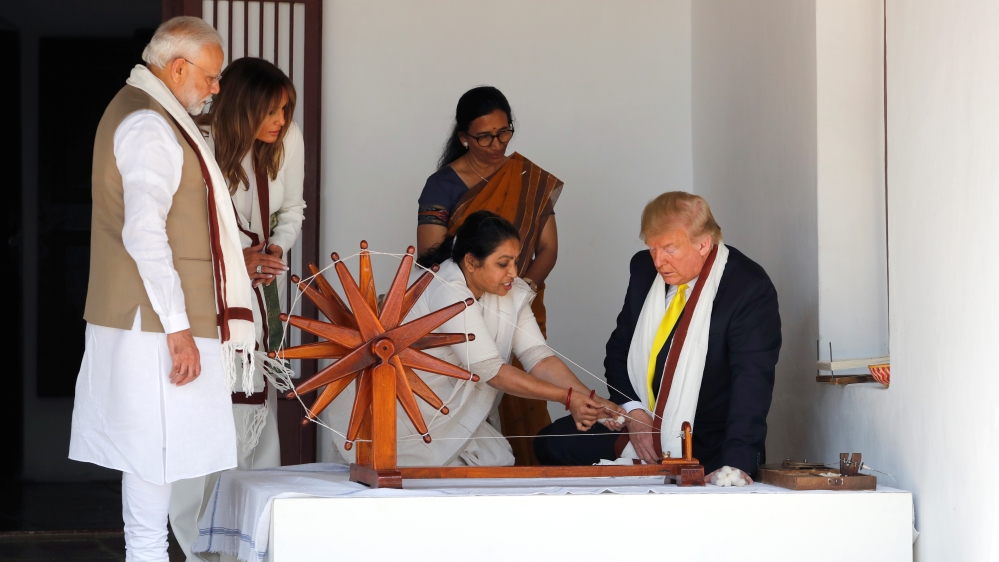
Safiya Ghori Ahmad, South Asia director at Washington, DC-based McLarty Associates said it would interesting to see “the deliverables” from the trip.
“I do hope that we see more than a rally, and actually see solutions to long-standing economic issues that impact US companies,” Ahmad said.